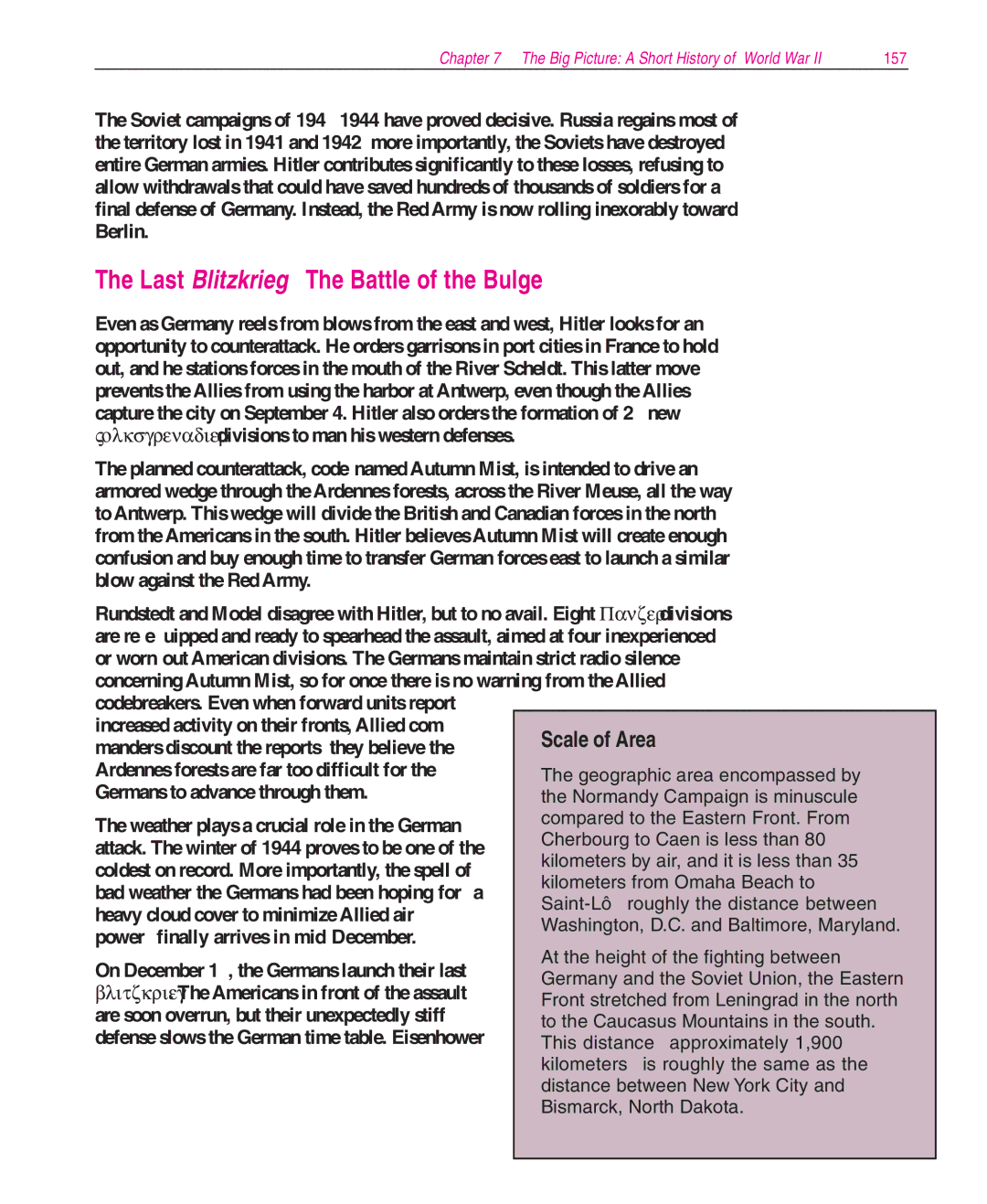
Chapter 7 The Big Picture: A Short History of World War II | 157 |
The Soviet campaigns of 1943−1944 have proved decisive. Russia regains most of the territory lost in 1941 and 1942; more importantly, the Soviets have destroyed entire German armies. Hitler contributes significantly to these losses, refusing to allow withdrawals that could have saved hundreds of thousands of soldiers for a final defense of Germany. Instead, the Red Army is now rolling inexorably toward Berlin.
The Last Blitzkrieg The Battle of the Bulge
Even as Germany reels from blows from the east and west, Hitler looks for an opportunity to counterattack. He orders garrisons in port cities in France to hold out, and he stations forces in the mouth of the River Scheldt. This latter move prevents the Allies from using the harbor at Antwerp, even though the Allies capture the city on September 4. Hitler also orders the formation of 25 new Volksgrenadier divisions to man his western defenses.
The planned counterattack,
Rundstedt and Model disagree with Hitler, but to no avail. Eight Panzer divisions are
increased activity on their fronts, Allied com- manders discount the reports; they believe the Ardennes forests are far too difficult for the Germans to advance through them.
The weather plays a crucial role in the German attack. The winter of 1944 proves to be one of the coldest on record. More importantly, the spell of bad weather the Germans had been hoping for a heavy cloud cover to minimize Allied air power finally arrives in
On December 16, the Germans launch their last blitzkrieg. The Americans in front of the assault are soon overrun, but their unexpectedly stiff defense slows the German time table. Eisenhower
